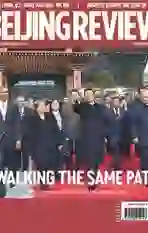Income Tax Needs Further Reform
2014-12-19
According to statistics released by the Ministry of Finance on November 6, individual income tax rose 12.4 percent year on year in the first three quarters of this year.
The proportion of direct tax, such as income tax, is on the increase, but at a very slow pace, said Xu Shanda, former vice Commissioner of the State Administration of Taxation. In 1994, the ratio of indirect tax in China was 75 percent, and two decades later, it now stands at roughly 60 percent. Currently the ratio of individual income tax is 6-7 percent, and is not likely to hit 15 percent in 2020. Ultimately, it is still a small tax.
However, the growth of individual income tax in the first three quarters of this year outpaced the overall tax revenue growth of 7.4 percent. Behind the growth of individual income tax is the elevation of per-capita disposable income of Chinese urban residents. As a result, the proportion of individual income tax against the total tax revenue rose to 6.3 percent in the first three quarters, a year-on-year increase of 0.3 percentage points.
Since being promulgated in 1980, the Individual Income Tax Law has gone through six revisions, with the focus of the latest three being on lifting the zero bracket amount. In 2011, the zero bracket amount was increased from 2,000 yuan ($327) to 3,500 yuan ($517), with the population eligible for individual income tax dropping from 84 million to 24 million and the proportion of working-class people eligible to pay the tax falling from 28 percent to 8 percent.
Nonetheless, people are still expecting to lift the zero bracket amount, for the current minimum level for taxation—3,500 yuan($517)—not only prevents low- and middleincome groups from fully releasing their consumption power, but also fails to play its role of secondary distribution.
Aside from that, low- and middle-income groups are still the major object of individual income tax, while high-income groups can resort other methods to avoid tax. In fact, individual income is categorized into income from wages and salaries, income from remuneration for personal services, as well as income from lease of properties, stock dividends and property transfer. Since tax on wages and salaries is levied by employers, the chance of tax evasion is relatively low.
Moreover, this sweeping approach should be eliminated. For one thing, the government should reduce or remit income tax if the taxpayer has a heavy family burden. For another, regional economic development and price level should be taken into consideration.
In the future, income tax reform should not only play a real role in rebalancing income distribution, but also benefit the taxpayers and unleash consumption potentials.
Firstly, the zero bracket amount should be further elevated to leave more wealth to the people. While Chinas individual income tax is mainly contributed by low- and middleincome groups, its the opposite in the developed world.
Secondly, efforts should be made to strengthen the collection and management of individual income tax. Except income from wages and salaries, tax authorities fail to effectively levy on other categories of income.
Thirdly, the taxation should take into consideration regional economic development, family income level and price level. Only when the government achieves the goal of reducing tax and increasing salaries and wages, can social justice be improved and domestic demand be triggered.
